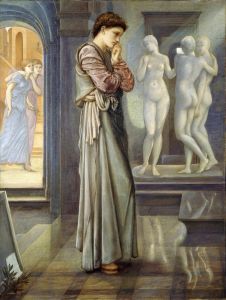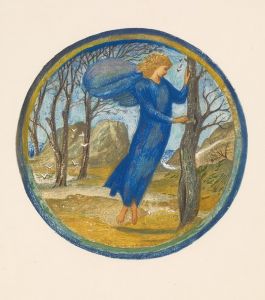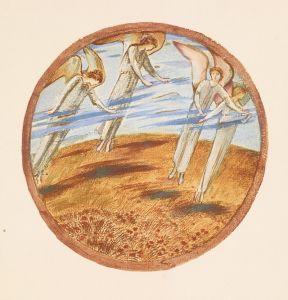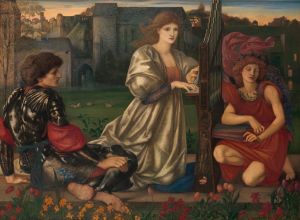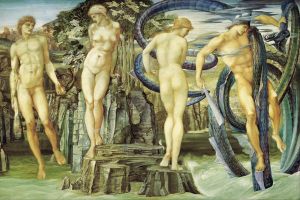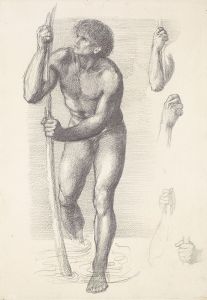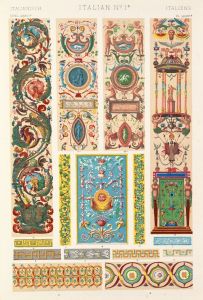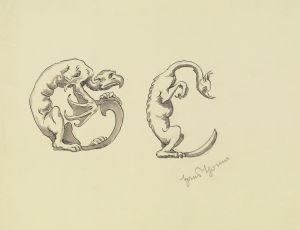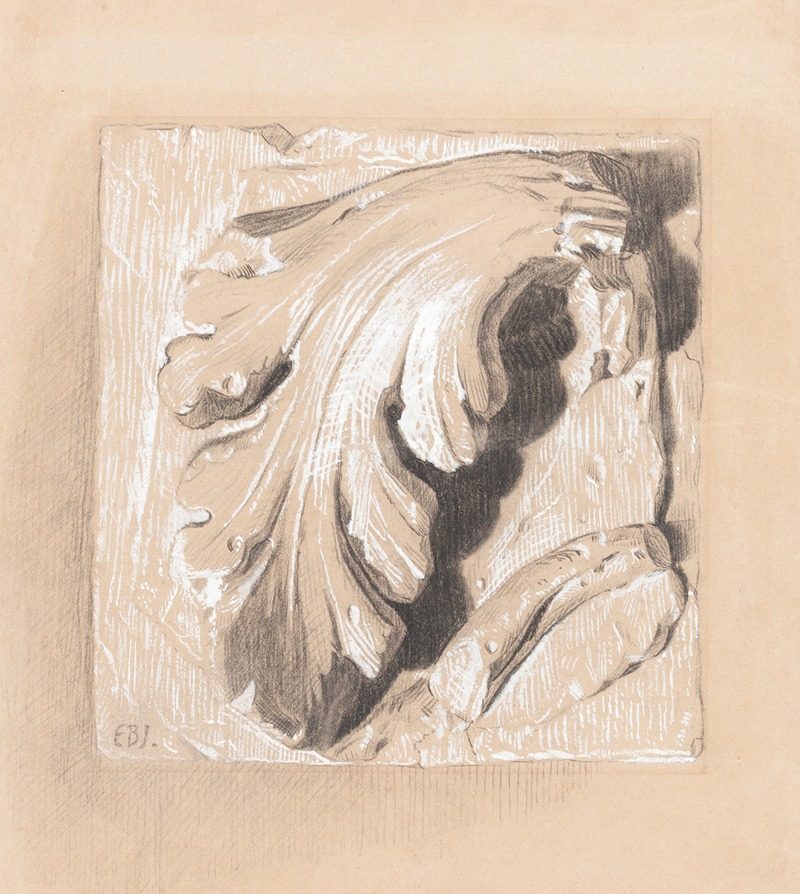
A Fragment from an Antique Frieze
A hand-painted replica of Sir Edward Coley Burne-Jones’s masterpiece A Fragment from an Antique Frieze, meticulously crafted by professional artists to capture the true essence of the original. Each piece is created with museum-quality canvas and rare mineral pigments, carefully painted by experienced artists with delicate brushstrokes and rich, layered colors to perfectly recreate the texture of the original artwork. Unlike machine-printed reproductions, this hand-painted version brings the painting to life, infused with the artist’s emotions and skill in every stroke. Whether for personal collection or home decoration, it instantly elevates the artistic atmosphere of any space.
"A Fragment from an Antique Frieze" is a painting by the British artist Sir Edward Coley Burne-Jones, a prominent figure in the Pre-Raphaelite Brotherhood and the later Aesthetic Movement. Burne-Jones was known for his romantic and often mythical subjects, characterized by a distinctive style that combined medieval and classical influences.
This particular work, "A Fragment from an Antique Frieze," exemplifies Burne-Jones's fascination with classical antiquity and his ability to blend it with his own imaginative vision. The painting is noted for its intricate detail and the harmonious composition that reflects the artist's deep appreciation for the art and culture of ancient civilizations.
Burne-Jones was born in Birmingham, England, in 1833 and was initially intended to enter the church. However, his path changed when he met William Morris at Exeter College, Oxford. The two became lifelong friends and collaborators, sharing a passion for medieval art and literature, which significantly influenced their work. Burne-Jones's artistic career began in earnest when he moved to London and became associated with the Pre-Raphaelite Brotherhood, a group of artists who sought to return to the detail, intense colors, and complex compositions of Quattrocento Italian art.
The Pre-Raphaelite Brotherhood, founded in 1848, aimed to reject the mechanistic approach that had come to dominate the academic art of the time. Instead, they sought inspiration from the art that preceded Raphael, hence the name. Burne-Jones, although not an original member, became closely associated with the movement and contributed significantly to its development.
"A Fragment from an Antique Frieze" is a testament to Burne-Jones's skill in creating works that evoke a sense of timeless beauty. The painting's title suggests that it is a piece of a larger narrative, much like the friezes found in ancient Greek and Roman architecture. These friezes often depicted mythological or historical scenes, and Burne-Jones's work captures this essence through its composition and subject matter.
The painting is characterized by its elegant figures, often depicted in flowing drapery, reminiscent of classical sculpture. Burne-Jones's use of color and light adds to the ethereal quality of the work, creating a dreamlike atmosphere that invites viewers to lose themselves in the scene. His attention to detail and the delicate rendering of the figures demonstrate his mastery of technique and his dedication to his craft.
Throughout his career, Burne-Jones was celebrated for his ability to create works that were both beautiful and thought-provoking. His paintings often explored themes of love, beauty, and the passage of time, drawing on a wide range of literary and historical sources. "A Fragment from an Antique Frieze" is no exception, as it reflects his deep engagement with the past and his desire to bring it to life through his art.
Burne-Jones's influence extended beyond his paintings, as he was also involved in the decorative arts, working with Morris on projects that included stained glass, tapestries, and book illustrations. His work helped to shape the Aesthetic Movement, which emphasized the importance of beauty and art for art's sake.
In summary, "A Fragment from an Antique Frieze" is a quintessential example of Sir Edward Coley Burne-Jones's artistic vision, combining classical influences with a unique, imaginative style. The painting remains a significant piece within the context of 19th-century British art, reflecting the enduring appeal of classical themes and the artist's exceptional talent.





